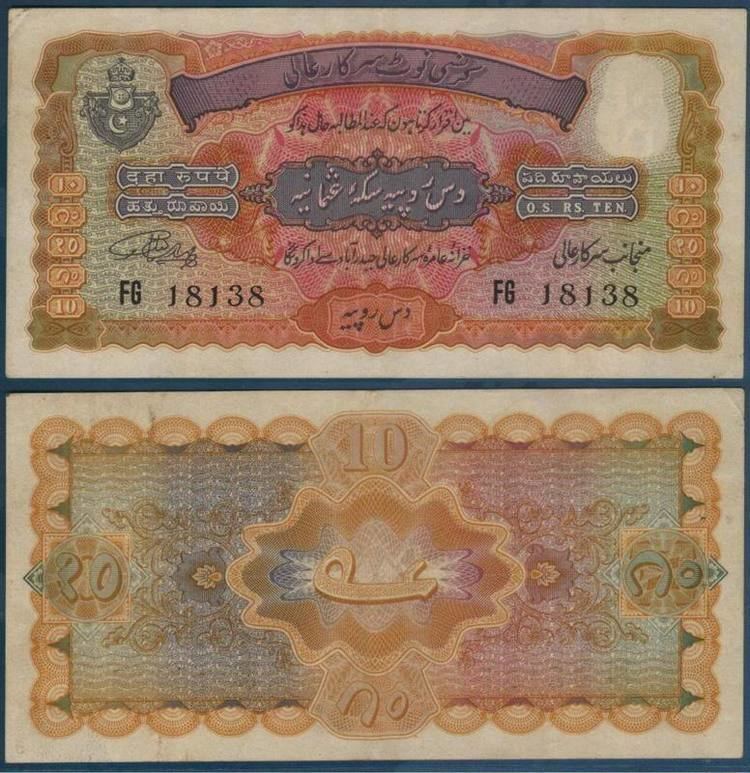1/16 anna User(s) Hyderabad | 1/192 pai | |
 | ||
Banknotes 1, 5, 10, 100, 1000 rupees Coins 1,2 pai, ½, 1, 2, 4, 8 annas, 1 rupee | ||
The Hyderabadi Rupee was the currency of the Hyderabad State from 1918 to 1959. It coexisted with the Indian rupee from 1950. Like the Indian rupee, it was divided into 16 annas, each of 12 pai. Coins were issued in copper (later bronze) for denominations of 1 and 2 pai and ½ anna, in cupro-nickel (later bronze) for 1 anna and in silver for 2, 4 and 8 annas and 1 rupee.
Hyderabad was the only Indian princely state that was permitted to continue issuing its own notes after joining the Dominion of India in 1948 and the Republic of India in 1950.
History
The Government of Hyderabad made several efforts to organize private bankers to set up a banking company which could issue paper money. The British, however resisted the attempts of Indian princely states to issue paper currency. The acute shortage of silver during the First World War and the contributions of Hyderabad to the British war effort led them to accept, in 1918, paper currency in denominations of Rs.10/- and Rs.100/- issued under the Hyderabad Currency Act.
The currency was designated the Osmania Sicca (OS). One and five rupee notes were subsequently issued in 1919 and one thousand rupee notes were issued in 1926. After the setting up of the India Currency Notes Press at Nashik, Hyderabad notes came to be printed there.
In 1942, the Government of Hyderabad established the Hyderabad State Bank, with the responsibility, inter alia, of managing the OS. Hyderabad continued to mint its own coins until 1948, when India conquered the state after the Nizam refused to cede it to the new republic.
In 1950, the Indian rupee was introduced alongside the local currency, with the relationship of 7 Hyderabad rupees = 6 Indian rupees being used. In 1951, the Hyderabad rupee ceased to be issued and the Indian rupee became the main circulating currency, although the Hyderabad rupee was not demonetized until 1959.[1]
